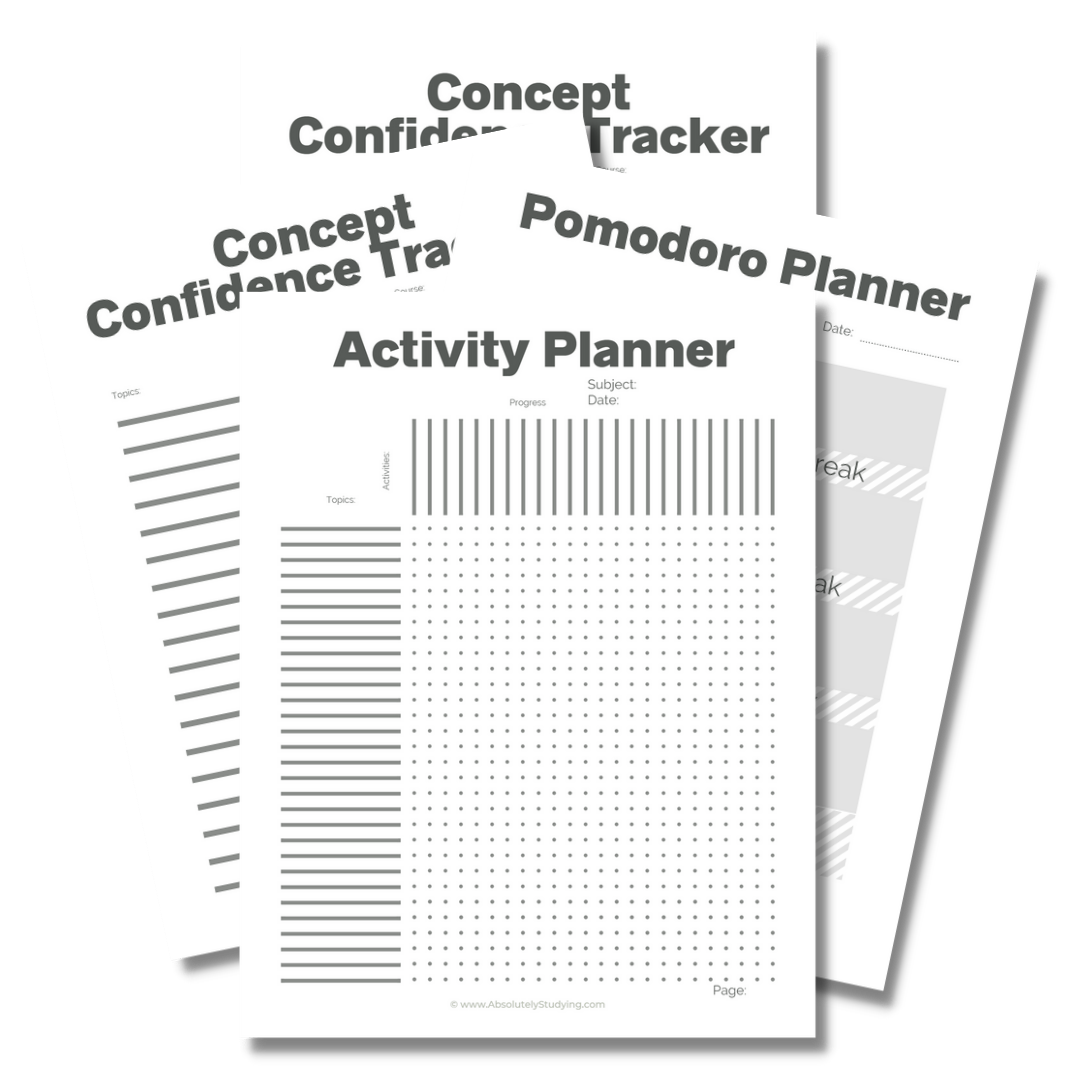How To Make the Best Use of Concept Maps in Your Class Notes
How To Make the Best Use of Concept Maps in Your Class Notes
How to make a concept map and why they are an essential learning tool.
Everything you need for the semester you want!
This bundle includes:
The Syllabus Study Planner
The Pomodoro Planner
A Confidence Tracker
A Q&A planner
The “Get Organized Checklist”
and more!
This workbook is full of super useful resources that can be applied to every aspect of your day.
* Disclaimer * Some of the posted links are affiliate programs. By clicking these links, I may receive monetary compensation. This will not alter the price or change the buyer's experience.
Today I wanted to discuss one of the most dynamic devices available to a visual learner. Mind maps and concept maps are handy and versatile academic tools. They can brainstorm ideas, take notes, link relationships, explain both basic and abstract concepts, and test your knowledge. The applications of these maps to your studies are essentially limitless.
Being able to lay out and visually see all the connections between concepts can sometimes allow you to digest the information better. Through notes and illustrations, you can show the relationships exactly. For many students, this will help to process the data much more easily than reading it alone.
Concept maps can be easily added to any study or note-taking strategy. If you struggle to create a study strategy that works for you, try my study planner template. You can track more than 20 activities for each topic you learn. It’s free, and you can download it here.
Now, let’s go on an uncomfortably in-depth dive into the world of concept maps!
Study Guide Template
Everything you need for the semester you want!
What is a concept map?
A concept map is a way to display information, organized top-down in order of ideas. The big, overarching idea is placed at the top. As you work your way down, the more detailed and specific concepts are arranged in order of relationship.
A concept map’s essential purpose is to graphically represent associations between concepts. Big ideas with many links are placed higher up. These will divide into their core components, which will then break down into their elements, and so on. The overall diagram will then show how each idea relates to creating the main topic.
Concept maps, in general, resemble a family tree. It has one or sometimes two boxes at the top. As you progress down the chart, each entry is split into pieces. The further down the page you go, the more boxes or icons you will find with finite details.
What’s the difference between concept maps and mind maps?
Concept maps usually start with the most general ideas on the top and become progressively specific as you work your way down. Mind maps, however, use a center-out approach where the most general information is in the middle of the page.
In general, mind maps appear to be less organized and more spontaneous. This is simply because of the relaxed layout and how all relationships are commented on and connected. Because of this, mind maps are the superior choice when doing a brain dump.
The key to both exercises is that we start big and get small. Big thoughts, or general statements, are the starting point. We then split those ideas into many parts. These are broken down even smaller until we get to the most specific ideas or examples.
How To Make the Best Use of Concept Maps in Your Class Notes
Concept maps help you to visually dissect the parts of any concept. This is especially helpful for higher-level theories that have many moving pieces.
Anything that can be broken down into its core components should be. This helps to understand and isolate the different elements contributing to any theory.
Concept maps help to visualize relationships between topics.
The first step to creating a concept map is to break up the idea you are working on into its fundamental components. Repeat this process with each new entry until you can’t separate any more of the theories into core details.
Each relationship is shown by a line. Sometimes, words or comments are added to those lines for improved clarification. Concepts can be linked to as many other ideas as applies to them. Diagrams or doodles are also a welcome addition to either map.
As your map grows, you will notice that ideas cluster in what appear to be sectors. Occasionally a relationship between specific concepts will appear that ties these divisions together. These links between sections are called crosslinks and often house some of the most relevant information on these maps.
Use words or brief phrases to link concepts together with complicated relationships.
Add crosslinks to any relationships, despite their location on the page. There may be times when a relationship is not obvious. In these cases, elaborate with a few words or phrases that clarify the connection. This will add depth to your concept map.
All these relationships between concepts are useless if you don’t understand how they are associated. Linking words or phrases solves this issue.
These are key detail that can be added onto the lines that prompt the nature of the specific relationship. Adding reminders is not always needed but can be a godsend when it comes to complex or abstract associations.
Study Skills Digital Course
Learn how to create a stress-free, comprehensive study strategy!
Regularly update your concept maps as you learn more about the subject.
One thing to remember with these charts is that they are never finished. The map will grow and become increasingly detailed as you learn more about the subject. It will continue to expand with more specifics added. Also, relationships may change with better understanding. Because of this, it is often best to start your map with a specific theme or question in mind; otherwise, the map will soon grow out of control.
The upside to such a flexible tool is that it will always allow you to integrate new teachings with old concepts. Updating an old map with new material will help you to quickly assess your understanding, organize your thoughts, and relate it to established principles.
If you are interested in the history of the invention of the concept map, you can find a great link to it here.
5 Tips to Make the Most Effective Concept Maps
Use a wide array of different studying styles to cement your understanding.
When quizzing yourself, writing out all the information about a subject or idea can help trigger connections and truly see if there are any weak areas you should focus on.
Create a concept map as the opening page for each course or subject to see how each topic you learn is connected.
Add diagrams and colours to your concept maps to add extra layers of visual memory cues.
Set a 5 or 10-minute timer and see how much of your concept map you can recreate as a fun study activity.
Study sessions don’t have to repeat the same boring activities every day. Concept maps, and even mind maps, can be a fun alternative that creates several types of mental associations.
They are extremely visual and can also satisfy spatial and kinetic learners as well. These benefits can be even further enhanced by adding diagrams, colour coding, and stylizing to themes.
If you want to create an effective study strategy that easily incorporates concept maps, pick up my study guide template. This workbook has pages that can track your activities, plan your study sessions, help create a strategy that works for you, and more. Download it here.
I would like to be transparent so that there are no misunderstandings. As an affiliate, I may earn a small commission from any products linked in this post. This is not a sponsored post, and I was not asked to recommend these products. These are products that I genuinely love and want to share with my audience.







